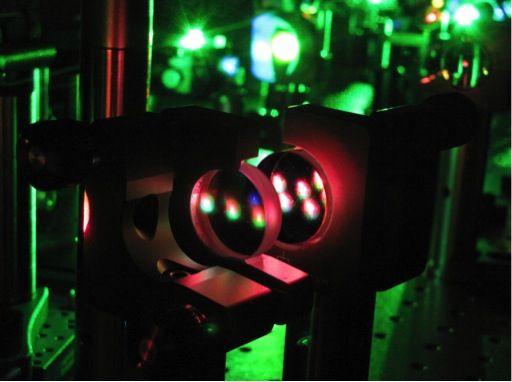Few-Cycle Lasers
Ultrashort laser pulses have found numerous applications over the last decades. However, there is still need in improving the pulse parameters. Especially the increase of the spectral bandwidth and consequently the reduction of the pulse duration of ultra-short pulses to only a few optical cycles is of great interest for many current research topics. Such few-cycle laser pulses enable for example time-resolved studies of ultrafast processes in atoms and molecules. Amplification of such few-cycle pulses provides sufficient energy to drive highly-nonlinear processes in gases such as high harmonic and attosecond pulse generation, opening the door to a whole variety of new applications.

Our goal is to develop schemes that can generate and amplify few-cycle laser pulses and to enhance their performance. One promising technique for the generation of huge spectral bandwidths is the nonlinear spectra broadening in micro-structured fibers, which recently has shown the generation of pulses containing only 1.3 optical cycles [1].
Optical parametric amplification (OPA) provides an adequate way to amplify such broadband pulses to high energies. Since the OPA is an instantaneous nonlinear process, no energy is stored in the amplification medium. This leads to the possibility to amplify the signals to extremely high average powers without thermo-optical problems. Employing high-power state-of-the-art fiber chirped-pulse amplification systems as pump sources allowed us to boost the average output power of two-cycle laser pulses to more than 22 W [2].
After amplification the pulses need to be temporally re-compressed. Caused by the huge spectral bandwidth the dispersion of all optical elements, including the beam path through air, needs to be compensated. Compression is usually achieved by a chirped-mirror compressor in combination with a spatial-light modulator.
In order to exploit the full potential of few-cycle laser pulses precise control of the carrier envelope phase (CEP) is required. In principle optical parametric amplifiers conserve the carrier envelop phase. However issues such as pump-signal synchronization and amplitude-phase-coupling in the nonlinear medium require attention and enhanced control [3,4].
The research leading to these results is partly funded by the German Federal Ministry of Education and Research (BMBF) under contract 13N12082 , the European Research Council under the European Union’s Seventh Framework Programme (FP7/2007-2013)/ERC grant agreement no. [240460] “PECS,” and the Thuringian Ministry for Economy, Labour, and Technology (TMWAT, Project no. 2011 FGR 0103).